QuestionHello
Is one or two short walks daily good enough for a lab pup? I have a yard so she gets to go out offen and run around.
How offen can a pup be bathed?
How do I get my pup used to being in her crate and being left alone?
AnswerThe time spent walking together is a great time to be bonding with the pup. A couple of walks a day in addition to being out as needed is fine. The younger the pup when you refuse to tolerate pulling on the leash, the easier it is break that habit.
You should stay with a flat fabric or leather collar until your puppy is 5
months old. Then you can go with the metal slip collar with the rings on each
end. Otherwise you could damage its windpipe. Put it on like this for the
usual dog on the left position. Pull the chain through the one ring forming a
"P". Facing the dog, slip it over its head. The free end comes over the neck
allowing the other end to release pressure when the leash is slack. A five
month old's head will still grow some. If you buy one that easily goes over
the head, it still should come off leaving the ears when the dog finishes
growing.
Easier dogs will give up their pulling with a few good snaps of the leash
combined with a stern "Bad dog!". But you don't want to use any more force than you need. One gentle technique I like is to just stop when he pulls. He wants to go. If you move forward when the leash is slack, and stop when he pulls, he should quickly figure out the only way to get to go, is not to pull. This is about teaching him not to pull, not getting somewhere. The man that taught it to me said "If in a half hour you haven't made it out to the front walk, fine, you have taught him a lesson.
Still, you may want to switch to a head collar. The leading brands are Promise, Haltie, and Gentle Leader. They have a
strap going around the dogs nose looking something like a muzzle. They work
by pulling the dogs head around. No other way gives you such great control
with so little force. The prong collar is now a dangerous relic of value only
for its macho looks. Do not consider using one without hands on instruction
from somebody with plenty of experience with them. Grown Labs can be terrible about pulling. Start now before your arm is out of its socket.
The fewer baths the better, and fanatically rinse out the last bit of shampoo if you give the puppy a bath. Baths chill the puppy, and can cause ear infections. Much a a little puppy's smell is its breath, and nothing except time improves that. If it does soil itself, rub it down with a wet towel and let it air off outside, then brush it. Usa a soft bristle brush. They are good for removing mud and other dirt. Later on, they can do most of the job of controlling odor.
Other dogs may not be as bad as the young Labs I am plagued with.
Still your house and dog will be much safer with the dog in a crate when you are
away. The dog may be happier in its den than loose in the house. It relaxes, it
feels safe in its den. It rests, the body slows down reducing the need for water
and relieving its self. Dogs that have been crated all along do very well. Many
of them will rest in their crates even when the door is open. I think the
plastic ones give the dog more of a safe, enclosed den feeling. They are harder
for dogs to open too. Metal ones can be put in a corner or covered
with something the dog can't pull in and chew. Select crate just big enough for
the full grown dog to stretch out in. Leave it some toys. Perhaps a Kong filled
with peanut butter. Don't leave anything in the crate the dog might chew up. It
will do fine without even any bedding. You will come home to a safe dog and a
house you can enjoy. If the dog hasn't been crated all along, start out putting
the crate in one of its favorite sleeping spots. If you have able to trust the
dog with a cushion, blanket, or bed, put it in the crate. Next, put its toys in,
maybe treats too. Feeding the dog there is a great way to convince it the crate
is a good place. It is also a great way to maintain order with more than one dog
at feeding time.
Still there are times when you must push the puppy in the crate, close the
door, and let it cry. As it gets a little older, it will accept the crate
much better. At bed time, with a new puppy, I have found lying down in front
of the crate like you were going to sleep and speaking softly to it, or
singing, until it settles down and goes to sleep works very well. Follow the
pattern, a period of active play, outside to eliminate, and then into the
crate.

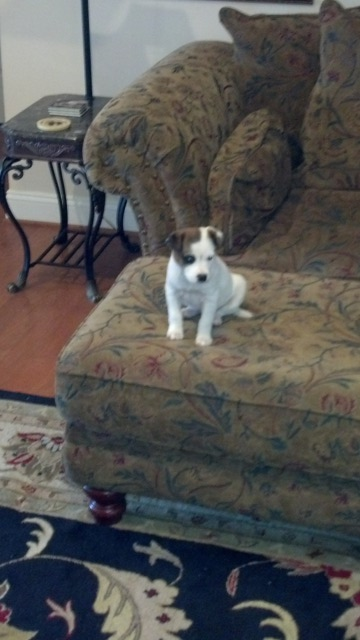 new puppy
Question
bella
I adopted a puppy from the humane
new puppy
Question
bella
I adopted a puppy from the humane
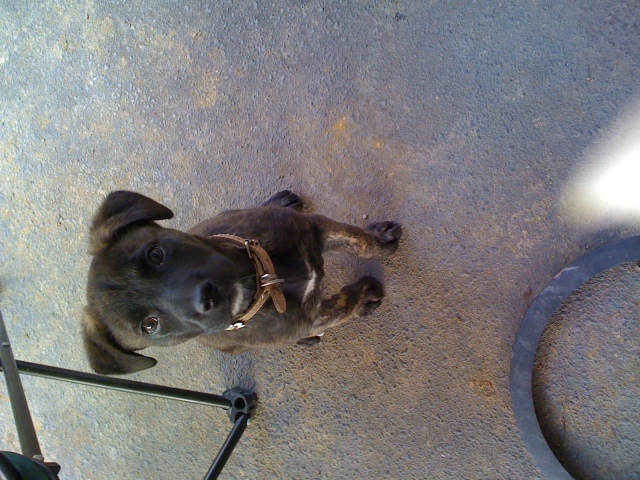 Puppy Teething, Jumping, Bathing and Ear drops
Question
Puppy Trinnie
Hi, I have a 5 & 1/2 month old S
Puppy Teething, Jumping, Bathing and Ear drops
Question
Puppy Trinnie
Hi, I have a 5 & 1/2 month old S
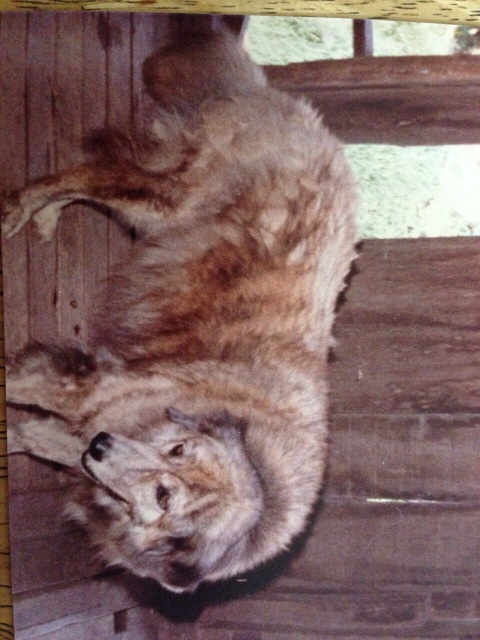 Identifying the breed
Question
Unknown Dog
Greetings Patti, I would li
Identifying the breed
Question
Unknown Dog
Greetings Patti, I would li
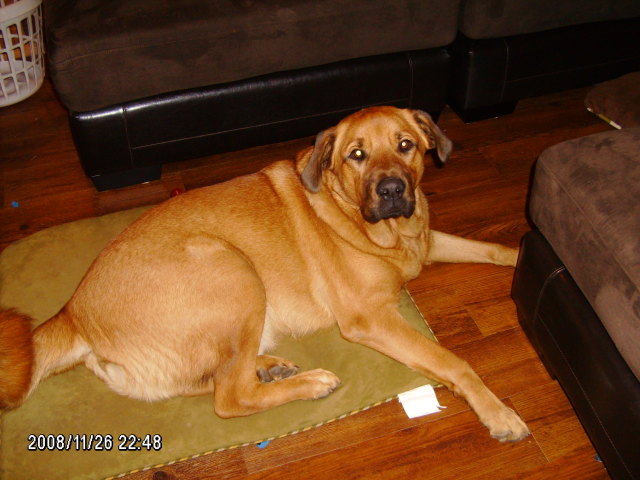 mouthing; pawing, wont drop it
Question
My puppy Trigger
I have a 10 month old LARGE (
mouthing; pawing, wont drop it
Question
My puppy Trigger
I have a 10 month old LARGE (
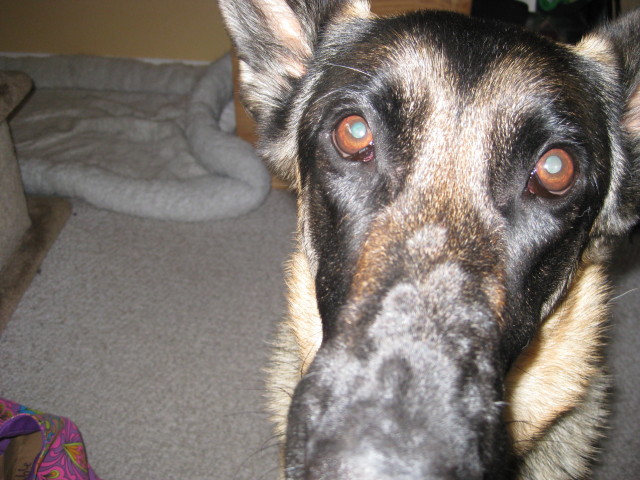 bumps on dogs nose
Question
bumps on nose
My dog has bumps on her nose..Sh
bumps on dogs nose
Question
bumps on nose
My dog has bumps on her nose..Sh